![Jean-Luc Godard Box Set - Alphaville/Le Petit Soldat/Une Femme Est Une Femme [1965]](/pictures/1011632.jpg) Jean-Luc Godard Box Set - Alphaville/Le Petit Soldat/Une Femme Est Une Femme | DVD | (06/09/2004)
from £N/A
| Saving you £N/A (N/A%)
| RRP
Jean-Luc Godard Box Set - Alphaville/Le Petit Soldat/Une Femme Est Une Femme | DVD | (06/09/2004)
from £N/A
| Saving you £N/A (N/A%)
| RRP Contains three films by Jean Luc Godard: ALPHAVILLE UNE FEMME EST UNE FEMME and LE PETIT SOLDAT.ALPHAVILLE:With 1965's ALPHAVILLE--part sci-fi action film part noir thriller--the acclaimed French New Wave director Jean-Luc Godard achieves a stunningly clinical futurism using absolutely no special visual effects. The result is a moving original film that with its abstract political and intellectual themes essentially redefines the apocalyptic science fiction genre. ALPHAVILLE clearly the product of one of cinema's greatest contributors is nothing less than a bona fide cult classic.UNE FEMME EST UNE FEMME:Godard pays tribute to American musicals in much the same way that his debut feature A BOUT DE SOUFFLE did to American gangster films. The story follows the beautiful Angela (Anna Karina) a strip-tease artist who wants nothing more than to have a baby. Her live-in boyfriend Emile (Jean-Claude Brialy) doesn't want to refuse and risk sparking major friction between the two. However fed up with her constant pleading Emile finally suggests that she shack up with his best friend Alfred (Jean-Paul Belmondo) and much to Emile's dismay she eventually takes his advice. Godard's second feature employs jump cuts and jarring sound mixing--most notably during Karina's strip-tease performances. Godard is at his most affectionate and good-natured here. He also makes several cinematic in-jokes including one in which Belmondo's character mentions that he wants to hurry home to watch A BOUT DE SOUFFLE the film that turned Belmondo into a megastar just one year before. Featuring a magnetically cute performance from Karina who soon after the film became Godard's wife this loving romantic comedy is a dazzler.LE PETIT SOLDAT (1960):Michel Subor stars as Bruno a hitman under contract by the French government who suddenly develops a conscience and a philosophy when he is ordered to kill a left wing Arab leader. His newfound ideals are provoked by the stunning Veronica (Karina) a young woman who is secretly employed by the Arabs. The two fall in love and not surprisingly Bruno finds it impossible to carry out his mission bringing down the wrath of the French government on both he and Veronica. Beautifully filmed by Raoul Coutard LES PETIT SOLDAT is less interested in the mechanics of plot as it is in providing Godard a voice for thoughts and musings on the politics and horrors of the Algerian War. It was originally banned in France because of its frank depiction of torture during Algeria's war of Independence which was tearing France apart at the time of the film's completion.
 Romeo And Juliet - G.C.S.E. Video Revision Notes - Act By Act / Scene By Scene | DVD | (20/09/2004)
from £N/A
| Saving you £N/A (N/A%)
| RRP
Romeo And Juliet - G.C.S.E. Video Revision Notes - Act By Act / Scene By Scene | DVD | (20/09/2004)
from £N/A
| Saving you £N/A (N/A%)
| RRP Achieve exam success with Peter Andrews B.Ed. MA. Head of English at the King Alfred School in London renowned for it's creative approach to learning and two of his students Liberty Mosse and Ben Farleigh who will take you through 'Romeo and Juliet' for G.C.S.E. National Curriculum Key Stage 4. The two teenage students describe with total clarity act by act scene by scene all aspects of Romeo and Juliet. Every key element in this play is covered - action characters themes
![No Trace [DVD]](/pictures/1131482.jpg) No Trace | DVD | (10/02/2014)
from £7.99
| Saving you £5.00 (62.58%)
| RRP
No Trace | DVD | (10/02/2014)
from £7.99
| Saving you £5.00 (62.58%)
| RRP Crime novelist Robert Southley (Hugh Sinclair) has a fondness for basing his books on his own experiences. When his luxurious London lifestyle is threatened by an American blackmailer, Southley chooses murder as his best weapon. To his horror, Southley is invited to help solve the case by Inspector MacDougall, in charge of the investigation at Scotland Yard. He reluctantly embarks on tracking down the 'unknown' killer... himself! Adding to his anxiety, his meddlesome secretary pitches theo...
![Return of the Fly [DVD] [1959]](/pictures/1119568.jpg) Return of the Fly | DVD | (05/11/2012)
from £N/A
| Saving you £N/A (N/A%)
| RRP
Return of the Fly | DVD | (05/11/2012)
from £N/A
| Saving you £N/A (N/A%)
| RRP The horror is back! The boundaries of science are pushed to their eery limits in this sequel to the classic, ever-popular The Fly. Here Phillipe, the son of the ill-fated scientist, naively continues his father's misguided experiments. The victim of his traitorous assistant's greedy ambitions, Phillipe finds himself in a terrifying limbo - he's grown the head and limbs of a fly! Taking spectacular revenge on his betrayers, Phillipe must also race against time and find a way to reverse...
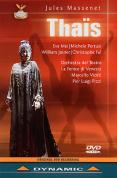 Massenet - Thais (Votti, Fenice Venice Orchestra, Mei) | DVD | (31/05/2004)
from £14.99
| Saving you £5.00 (33.36%)
| RRP
Massenet - Thais (Votti, Fenice Venice Orchestra, Mei) | DVD | (31/05/2004)
from £14.99
| Saving you £5.00 (33.36%)
| RRP ACT 11. Voici le pain2. Helas! enfant encore3. Vision4. Toi qui mis la pitie dans nos ames5. Esprit de lumiere et de grace6. Va mendiant chercher ailleurs ta vie!7. Viola donc la terrible cite!8. Athanael! C'est toi!9. Il est jeune!10. Garde-toi bien!11. C'est Thais. I'idole fragile12. Qui te fait si severeACT 213. Ah! je suis fatiguee a mourir!14. Etranger te voila comme tu l'avais dit!15. Je suis Athanael Moine
![Quadrophenia - Screen Outlaws Edition [Blu-ray] [1979][Region Free]](/pictures/1121735.jpg) Quadrophenia - Screen Outlaws Edition | Blu Ray | (08/04/2013)
from £N/A
| Saving you £N/A (N/A%)
| RRP
Quadrophenia - Screen Outlaws Edition | Blu Ray | (08/04/2013)
from £N/A
| Saving you £N/A (N/A%)
| RRP Jimmy is a teenager growing up in the first half of the 1960's; he rides through London on his scooter, pops pills, is mad about rock and roll and wears a Parka and Levis, nothing to extraordinary about that. But Jimmy's life comes to an aggressive climax during a violent Holiday weekend controntation between Mods and Rockers on Brighton beach. Special Features: Exclusive Artwork and Artcards
![Carry On Doctor [1967]](/pictures/1013058.jpg) Carry On Doctor | DVD | (04/05/2001)
from £7.46
| Saving you £2.53 (33.91%)
| RRP
Carry On Doctor | DVD | (04/05/2001)
from £7.46
| Saving you £2.53 (33.91%)
| RRP Bedpan humour rules in Carry On Doctor, the vintage 1968 offering from the familiar gang, assisted by guest star Frankie Howerd as bogus faith healer Francis Bigger. Hospitals, of course, always provided the Carry On producers with plenty of material. Today, these comedies induce a twinge of serious nostalgia for the great days of the National Health Service when Matron (Hattie Jacques, naturally) ran the hospital as if it was a house of correction, medical professionals were idolised as if they were all Doctor Kildare and Accident and Emergency Departments were deserted oases of calm. But even if you aren't interested in a history lesson, Talbot Rothwell's script contains some immortal dialogue, particularly when Matron loosens her stays. "You may not realise it but I was once a weak man", says Kenneth Williams' terrified Doctor Tinkle to Hattie Jacques. "Once a week's enough for any man", she purrs back, undaunted. Other highlights include Joan Sims, excellent as Frankie Howerd's deaf, bespectacled sidekick, Charles Hawtrey suffering from a phantom pregnancy, 1960s singer Anita Harris in a rare film role, and Barbara Windsor at her most irrepressible as nurse Sandra May. This is one of the best. On the DVD: Presented in 1.77:1 format for a pseudo-widescreen effect, the picture quality is good and sharp, accompanied by a standard mono soundtrack. The same no-frills approach is taken with the packaging; a functional scene index and no extras. Yet again, a missed opportunity to use the DVD release to provide some context. At their best, the Carry On films are rightly seen as classic comedies of their type. They really deserve to be better celebrated. --Piers Ford
![The Plane Makers - Volume 2 [DVD]](/pictures/1149155.jpg) The Plane Makers - Volume 2 | DVD | (01/07/2013)
from £35.98
| Saving you £N/A (N/A%)
| RRP
The Plane Makers - Volume 2 | DVD | (01/07/2013)
from £35.98
| Saving you £N/A (N/A%)
| RRP The prequel to ATV's famous boardroom drama The Power Game, The Plane Makers follows the fortunes of the Scott Furlong airplane development company and its managing director, the ruthless John Wilder (Patrick Wymark). This release contains fifteen classic episodes, originally shown as part of series two. Having suffered a setback to his ambitions in failing to become Chairman, Wilder takes a wild gamble on the future of Scott Furlong, pushing through a plan to build twelve more Sovereign aircraft before the money has been recovered on the initial order. The scheme is vehemently opposed by new Chairman Sir Gordon Revidge - and it is Revidge's merchant bank that will have to finance the project. As uncertainty and unrest sweep through the factory, a game of bluff and counter-bluff takes place in the boardroom...
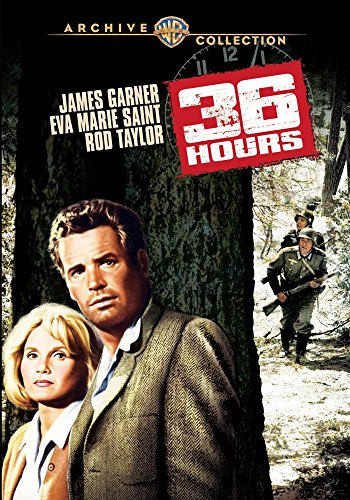 36 Hours | DVD | (11/04/2017)
from £N/A
| Saving you £N/A (N/A%)
| RRP
36 Hours | DVD | (11/04/2017)
from £N/A
| Saving you £N/A (N/A%)
| RRP ![Not Wanted on Voyage [1957]](/pictures/1079490.jpg) Not Wanted on Voyage | DVD | (28/01/2008)
from £19.99
| Saving you £-7.00 (N/A%)
| RRP
Not Wanted on Voyage | DVD | (28/01/2008)
from £19.99
| Saving you £-7.00 (N/A%)
| RRP A rollicking comedy adventure with Brian Rix and Ronald Shiner playing two cabin stewards bound for Tangiers aboard a cruise ship. As comedy enthusiasts would expect Rix loses his trousers as the two bumbling stewards attempt to uncover the identity of a jewel thief and recover the priceless diamonds of a wealthy passenger.
![Indiscreet [1958]](/pictures/1013080.jpg) Indiscreet | DVD | (04/04/2011)
from £N/A
| Saving you £N/A (N/A%)
| RRP
Indiscreet | DVD | (04/04/2011)
from £N/A
| Saving you £N/A (N/A%)
| RRP Anna Kalman (Ingrid Bergman) is a wealthy actress whose love affairs never last for long. When she meets businessman Philip Adams (Cary Grant) at a NATO dinner she is attracted to him. He reveals that he is married but this does not prevent them embarking on a love affair. However just as Philip prepares to depart for a job in New York Anna discovers that he has been less than honest with her...
![Laurel And Hardy - Be Big / Laughing Gravy [1931]](/pictures/1013295.jpg) Laurel And Hardy - Be Big / Laughing Gravy | DVD | (24/01/2000)
from £N/A
| Saving you £N/A (N/A%)
| RRP
Laurel And Hardy - Be Big / Laughing Gravy | DVD | (24/01/2000)
from £N/A
| Saving you £N/A (N/A%)
| RRP ![Family Plot [Blu-ray] [1976][Region Free]](/pictures/1121608.jpg) Family Plot | Blu Ray | (13/05/2013)
from £N/A
| Saving you £N/A (N/A%)
| RRP
Family Plot | Blu Ray | (13/05/2013)
from £N/A
| Saving you £N/A (N/A%)
| RRP Alfred Hitchcock's final film Family Plot is understated comic fun that mixes suspense with deft humour, thanks to a solid cast. The plot centres on the kidnapping of an heir and a diamond theft by a pair of bad guys led by Karen Black and William Devane. The cops seem befuddled, but that doesn't stop a questionable psychic (Barbara Harris) and her not overly bright boyfriend (Bruce Dern, in a rare good-guy role) from picking up the trail and actually solving the crime. Did she do it with actual psychic powers? That's part of the fun of Harris's enjoyably ditsy performance. --Marshall Fine
![Carry On Again Doctor [1969]](/pictures/1013046.jpg) Carry On Again Doctor | DVD | (27/08/2001)
from £5.48
| Saving you £4.51 (82.30%)
| RRP
Carry On Again Doctor | DVD | (27/08/2001)
from £5.48
| Saving you £4.51 (82.30%)
| RRP The title of Carry On Again Doctor (1969) says it all; almost the same cast playing similar characters to their previous year's outing in Carry On Doctor. This one rejoices in the alternative title "Bowels are Ringing". But the enduring popularity of these films owes almost everything to their basic formula and if this one occasionally seems a bit cobbled together, all the old favourites are still there, working away. This time, the setting moves from the National Health Service to the private sector and even stretches as far as the "Beatific Islands" when Jim Dale is exiled to a missionary clinic for his overzealous attention to the female patients, who include Barbara Windsor of course. There, orderly Sid James rules the roost of the clinic with his harem of local women. Trivia addicts can spot Mrs Michael Caine in a brief role as a token dusky maiden. The second half of the Talbot Rothwell script picks up nicely as the characters converge on the private hospital back in England where Dale rakes in the money with a bogus weight loss treatment. Hattie Jacques is in fine form as Matron, Kenneth Williams fascinates with his usual mass of mannerisms and Joan Sims is stately as the Lady Bountiful figure financing most of the shenanigans. It's a tribute to their professionalism that we can still lose ourselves in some of the creakiest old jokes around. On the DVD: Bog standard 4:3 picture format and mono soundtrack provide an adequate viewing experience, especially as today most people will be more familiar with these films from television transmissions than from their cinema release. However, the lack of extras is a shame. Apart from the scene index, there is nothing to distinguish the DVD from its video equivalent. At the very least, a cast list or star biographies would add a little value. --Piers Ford
![The Bigamist [1953]](/pictures/1074947.jpg) The Bigamist | DVD | (22/10/2007)
from £13.48
| Saving you £-0.49 (N/A%)
| RRP
The Bigamist | DVD | (22/10/2007)
from £13.48
| Saving you £-0.49 (N/A%)
| RRP The Bigamist goes where no movie has gone before; it gives us a bigamist as the central character and manages to make us sympathise with his plight. Harry Graham is a salesman who longs to spend time with his wife played by Joan Fontaine but she's a workaholic businesswoman who rarely finds time in her schedule for her husband. While on a sales trip Graham befriends a waitress played by Ida Lupino and as friendship turns to love Graham calls and teases wife about meeting another woman; we see a quick flash of fear in her eyes but then she immediately changes the conversation in a fake chirpy tone and pretends nothing bothers her. The well-detailed characters bring the drama of The Bigamist to life. The waitress is a tough but compassionate character much more full of life than Fontaine's Eisenhower era wife. Significantly we also discover that the waitress is much more fertile than Fontaine - who cannot bear children. This subtle critique of '50s families and the sterility of home life when business becomes more important than family communication makes The Bigamist just as relevant today as when it was made in 1953.
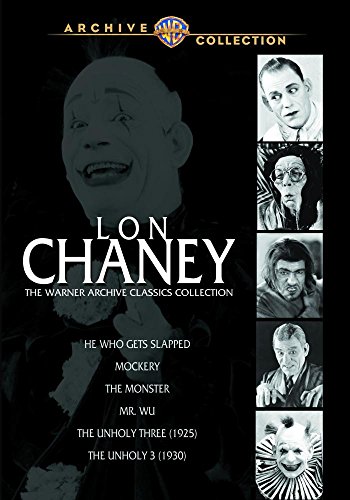 Lon Chaney: The Warner Archive Classics Collection | DVD | (23/06/2015)
from £N/A
| Saving you £N/A (N/A%)
| RRP
Lon Chaney: The Warner Archive Classics Collection | DVD | (23/06/2015)
from £N/A
| Saving you £N/A (N/A%)
| RRP 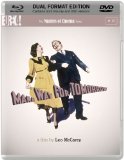 MAKE WAY FOR TOMORROW (Masters of Cinema) Dual Format (Blu-ray + DVD) | Blu Ray | (14/11/2011)
from £N/A
| Saving you £N/A (N/A%)
| RRP
MAKE WAY FOR TOMORROW (Masters of Cinema) Dual Format (Blu-ray + DVD) | Blu Ray | (14/11/2011)
from £N/A
| Saving you £N/A (N/A%)
| RRP Of Make Way for Tomorrow, Orson Welles told Peter Bogdanovich: “Oh my God that’s the saddest movie ever made.” Leo McCarey’s personal favourite among all his films (which included The Awful Truth and An Affair to Remember) is sad, yes, but it also stands as cathartic affirmation of the dignity of human feeling, and in the testament of such achieves a subtle complexity of characterisation on par with Renoir, Ford, and Hawks. Victor Moore and Beulah Bondi, two of the great Hollywood character actors, portray the couple whose house the bank has foreclosed upon, and who are forced subsequently to move into their children’s homes in the city. A near-musical restructuring of gratitude and debt ensues once the offspring deem the couple’s lodging an imposition: the two are separated, then reunited weeks later... as they glide inexorably into an uncertain future. Unrelentingly unsentimental, Make Way for Tomorrow exerted a powerful influence on Ozu’s Tokyo Story and several other key entries in the Japanese master’s body of work. It is a film that, to give Welles the last word, “could make a stone cry.” The Masters of Cinema Series is proud to present Leo McCarey’s truly great Make Way for Tomorrow for the first time on Blu-ray anywhere in the world, as part of this Dual Format (Blu-ray + DVD) edition. Dual Format Edition Including: Newly restored 1080p HD encode in the film’s original aspect ratio Peter Bogdanovich discussing McCarey and the film [20:00] Gary Giddins discussing the film’s social and political contexts [21:00] Optional English subtitles (SDH) for the deaf and hearing-impaired 36-PAGE BOOKLET featuring a new essay by writer Geoffrey O’Brien and an excerpt from Josephine Lawrence’s source novel Years Are So Long
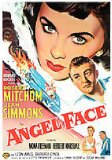 Angel Face | DVD | (26/05/2008)
from £N/A
| Saving you £N/A (N/A%)
| RRP
Angel Face | DVD | (26/05/2008)
from £N/A
| Saving you £N/A (N/A%)
| RRP Robert Mitchum and Jean Simmons team in this outstanding example of classic Noir. Directed by Otto Preminger (Laura The Man with The Golden Arm). Mitchum is at his best as Frank Jessup an ambulance driver driven and ensnared by Simmons who demonstrates her own brilliant talents in this compelling plot that leads to a taut and suspenseful climax.
![Midnight Cowboy [1969]](/pictures/1071196.jpg) Midnight Cowboy | DVD | (18/06/2007)
from £N/A
| Saving you £N/A (N/A%)
| RRP
Midnight Cowboy | DVD | (18/06/2007)
from £N/A
| Saving you £N/A (N/A%)
| RRP This multi-Academy Award winning film masterpiece stars Jon Voight as Joe Buck a charming but hopelessly naive Texas ""cowboy "" who dreams of making his fortune servicing wealthy women in the Big Apple. Instead he's conned into partnering up with small-time hustler Ratso Rizzo (Dustin Hoffman). Living together on the tattered edges of society these two outcasts develop an unlikely bond that helps them transcend their cruel existence in this timeless cinema classic directed by the legendary John Schlesinger.
![Plan 9 From Outer Space [DVD] [1959]](/pictures/1096092.jpg) Plan 9 From Outer Space | DVD | (07/09/2009)
from £N/A
| Saving you £N/A (N/A%)
| RRP
Plan 9 From Outer Space | DVD | (07/09/2009)
from £N/A
| Saving you £N/A (N/A%)
| RRP Plan 9 From Outer Space

Please wait. Loading...
This site uses cookies.
More details in our privacy policy